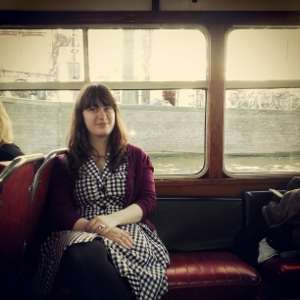When you go to see a student orchestra play a concert, your expectations are generally lower than with professional orchestras. And so, when the Symfonieorkest of the Amsterdam Conservatory and soloists from the same Conservatory came to Leiden with an exciting program of Ravel, Prokofiev, Dvořák and Janáček, I thought it’d be a fun night, but not necessarily impressive. However, as soon as the orchestra started playing I realized I was in for a surprise.
Opening with Ravel’s Valses nobles et sentimentales the Symfonieorkest Conservatorium van Amsterdam quickly showed us how bright the future of classical music is looking. Of course the performance was not perfect – some harmonies could have been more subtle and polished – but this seemed more a result of not playing together full-time and was definitely not due to any lack of skill or musicality. Ravel’s Valses nobles et sentimentales is a work that seems to anticipate his famous La Valse; they are quirky little waltzes that are even pleasing to the ear of someone like me who generally rather dislikes them. Ravel’s orchestration is always so rich and warm, while still having enough idiosyncrasies to keep you interested.
Ravel’s Piano Concerto for the left hand is a work that I will always enjoy listening to. I have been lucky enough to have seen Nikolai Lugansky play this concerto twice this year, and he is always difficult to top. Still, soloist Mengije Han played it very well. The work consists of only one movement and is full of rhythmical, jazz-influenced moments. There is one particular section after around nine minutes where the orchestra introduces a bombastic theme that the piano expands on –and this requires not only virtuosic skills from the pianist but also an impeccable sense of rhythm, which Han certainly proved to possess. The orchestra and soloist worked together seamlessly to give the piece the energy and fun it requires.
The highlight of the evening was Prokofiev’s Piano Concerto no.1, played by Amsterdam Conservatory student Caspar Vos. It is a tumultuous piece that consists of three short movements. Prokofiev finished writing it when he was only 20 years old, and 23-year old Caspar Vos played it fantastically, with passion and exceptional skill that was particularly apparent in the third movement (Allegro scherzando). It is not only incredibly virtuosic but also loud and abrasive (perhaps clearly the work of a young composer), while managing to put a smile on my face that lasted for the entirety of the movement. Not only are the melodies lovely, as you would expect from Prokofiev, but the entire piece is an incredible surge of energy that was tangible in the concert hall. This was also certainly due to Vos’s playing: he wasn’t afraid to go all out and did the nature of the work justice.
Antonín Dvořák’s Romance is a short piece for orchestra and solo violin (though it can also be performed by violin and solo piano). It is based on the second movement of Dvořák’s String Quartet no. 5, a work he was unhappy with – but his reworking of the it into the Romance is absolutely beautiful. Violinist Koen Stapert did not quite play it with as much emotion as I would have liked – it can be a heartbreaking work, but instead it lingered at just beautiful – which is obviously still quite a feat for someone who is “just” a conservatory student.
When writing Taras Bulba Leoš Janáček was inspired by Nikolai Gogol’s work: Taras Bulba is the story of an old Cossack named Taras Bulba and his two sons during a war between the Cossacks and the Poles. His first son Andrei is depicted in the first movement, though its title “The Death of Andrei” already betrays what his fate will be. He falls in love with a Polish girl, starts fighting for the Polish side, and is killed by his own father. These elements are all present in the music – the love between the girl and Andrei by woodwind solos, and the war by angry brass.
The second movement is about Bulba’s second son, Ostap. Titled “The Death of Ostap,” his story is not much happier. He is grieving for Andrei’s death and captured by Polish soldiers, who take him to Warsaw where he is tortured and killed. The Poles dance at the moment of his death while Taras Bulba calls out for his son. The madness of the situation is orchestrated cleverly by Janáček – the music verges on being messy, but instead it becomes exhilarating and unsettling. The third movement is similar to the first two in that it concerns a death – but this time, that of Taras Bulba. However, before he is burnt alive he prophesies that the Cossacks will prevail in the end and that there is nothing they fear. All this lead to an ending that was hopeful and triumphant – a fitting end to the evening.


